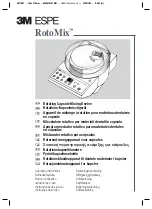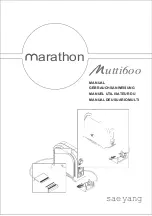
66
Voice Mode
GEN Other (General Other)
There are various parameters for Micro Tuning and for
controlling how the generated sound is output.
■
Mode
Select monophonic or polyphonic playback.
Select whether the Voice is played back
monophonically (single notes only) or
polyphonically (multiple simultaneous notes).
❏
Settings:
mono, poly
■
Assign
If you set Key Assign to “single,” the doubled
playback of the same note is prevented. The
synthesizer will terminate a note when the same
note is received again. If you select “multi,” the
synthesizer will consecutively assign each instance
of the same received note to a separate channel,
making multiple part tone generation possible.
❏
Settings:
single, multi
■
MicroTuning
Set the Micro Tuning (tuning system, or temperament) used
for the Voice. Normally you would use “Equal Temperament”
but there are also 31 other tuning systems available.
❏
Settings:
(see the following list)
Type
Key
Comments
Equal temperament
No.
00
The “compromise” tuning used for most of
the last 200 years of Western music, and
found on most electronic keyboards. Each
half step is exactly 1/12 of an octave, and
music can be played in any key with equal
ease. However, none of the intervals are
perfectly in tune.
1/4 shifted
28
This is the normal equal tempered scale
shifted up 50 cents.
Twenty–four equally spaced notes per
octave. (Play twenty–four notes to move one
octave.)
Werckmeister
25
Kirnberger
26
Vallotti & Young
27
Pure major
C~B
01~12
Pure minor
A~G#
The same as Pure Major, but designed for
the minor scale.
Andreas Werckmeister, a contemporary of
Bach, designed this tuning so that keyboard
instruments could be played in any key.
Each key has a unique character.
Francescantonio Vallotti and Thomas Young
(both mid–1700s) divised this adjustment to
the Pythagorean tuning in which the first six
fifths are lower by the same amount.
Johan Philipp Kirnberber was also
concerned with tempering the scale to allow
performances in any key.
13~24
This tuning is designed so that most of the
intervals (especially the major third and
perfect fifth) in the major scale are pure. This
means that other intervals will be
correspondingly out of tune. You need to
specify the key (C~B) you will be playing in.
1/4 tone
29
Forty–eight equally spaced notes per octave.
(Play forty–eight notes to move one octave.)
1/8 tone
30
Indian
C~B
31
Usually observed in the Indian music (white
keys [C~B] only).
GENíOther) Mode Assign MicroTuning
C 1234 poly single 31:Indian
Common Quick Edit
Various parameters control the sonic properties of the
Voice. There are four screens.
QED Level (Quick Edit Level)
QED EffectCtrl (Quick Edit Effect)
QED Filter (Quick Edit Filter)
QED EG (Quick Edit Envelope Generator)
QED Level (Quick Edit Level)
These parameters control the output level (volume)
and pan position of the Voice.
■
Vol (Volume)
Set the output level of the Voice.
❏
Settings:
0 ~ 127
■
Pan
Set the stereo pan position of the Voice.
❏
Settings:
L63 (Left) ~ C (Center) ~ R63 (Right)
■
RevSend (Reverb Send)
Set the Send level of the signal sent from Insertion
Effect 1/2 (or the bypassed signal) to the Reverb
effect.
❏
Settings:
0 ~ 127
■
ChoSend (Chorus Send)
Set the Send level of the signal sent from Insertion
Effect 1/2 (or the bypassed signal) to the Chorus
effect.
❏
Settings:
0 ~ 127
QED EffectCtrl (Quick Edit Effect)
Set the amount of Chorus applied to the entire Voice.
■
Chorus
Set an offset value for the parameters used by each
type of Chorus.
❏
Settings:
-64 ~ 0 ~ +63
QEDíEffectCtrl) Chorus
C 1234 +63
QEDíLevel) Vol Pan RevSend ChoSend
C 1234 127 C 127 127
















































